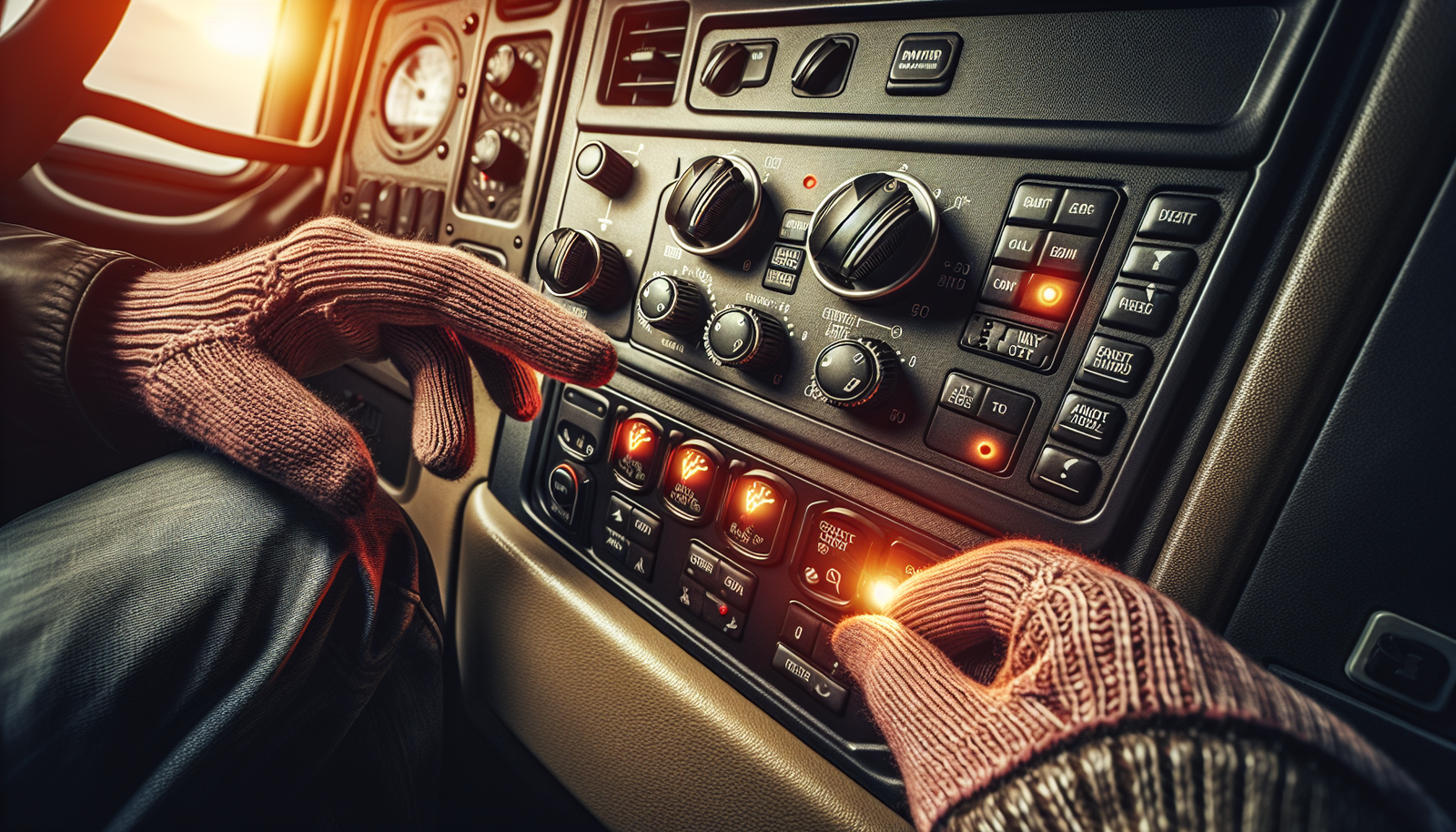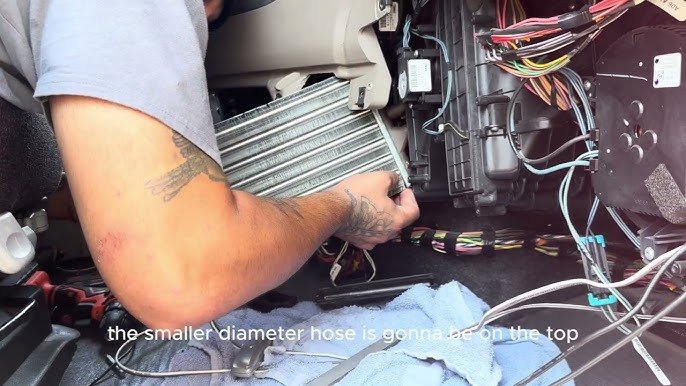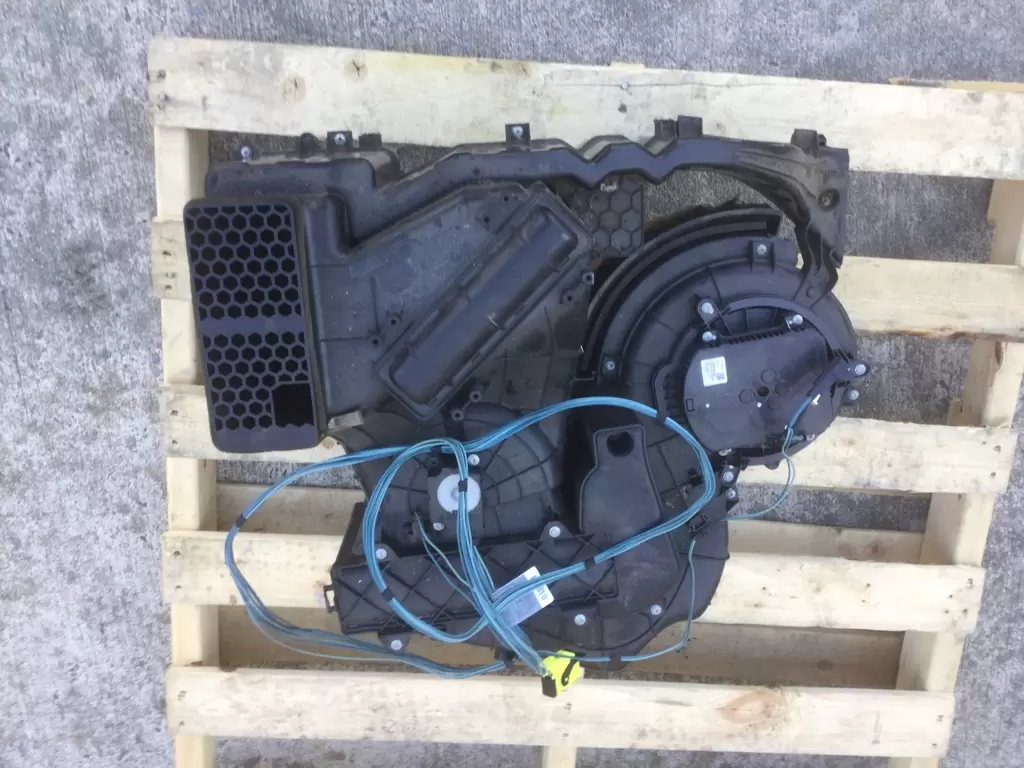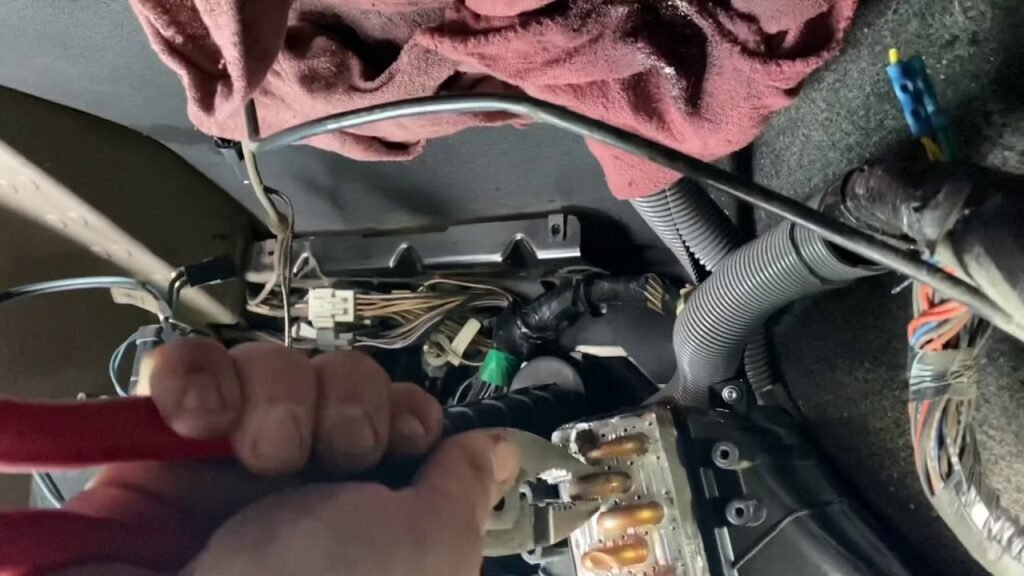
You might be sitting there, pondering if the recent repairs on your much-valued Freightliner Cascadia have tampered with its heater. It’s a situation no one enjoys, as your trusty truck brave through harsh conditions, you need that warm air to keep you comfortable. With a mix of anecdotal evidence and expert advice, this article will arm you with knowledge, helping you figure out if the event is only a disappointing coincidence or if that service session may truly have been the culprit behind your heater’s present underperformance. Let’s explore together in “Could Recent Repairs Have Affected My Freightliner Cascadia’s Heater?”

Understanding your Freightliner Cascadia’s Heating System
Navigating the maintenance needs of your Freightliner Cascadia can seem like a daunting task, especially when it comes to the intricacies of its heating system. Understanding the core components, operations, and the common challenges of this system can make your job easier.
Components of the Cascadia Heating System
The heating system in your Cascadia is a complex network made up of various parts like the heater core, blower motor, thermostat, coolant, and a host of other components. Each unit plays a vital role in ensuring a comfortable climate inside your truck. The heater core, for instance, is a small radiator-like device that circulates hot coolant from the engine to warm the cabin. Meanwhile, the blower motor blows the generated heat from the heater core into the truck cabin.
How the Heating System Works
Your Cascadia’s heating system begins its operation with the engine, which produces heat as it runs. This heat is transferred to the coolant system, where it is circulated throughout the heating system. The coolant carries the heat to the heater core. The blower motor then propels air over the heated heater core, and the warmed air is dispersed throughout the cabin, ensuring you stay warm on those chilly journeys.
Common Heater Problems and Symptoms
The complexity of heating systems in trucks means there’s a myriad of issues that can occur. Problems ranging from wear and tear, leaks or blockages in the heating core, thermostat malfunctions, electrical issues, or even a low coolant level can hinder the heating system’s performance. Recognizable symptoms may include insufficient heating, strange noises, unpleasant odors, or even overheating.
The Impact of Repairs on Vehicle Systems
Automotive maintenance often involves fixing a multitude of interconnected parts. These repairs, while necessary, can occasionally lead to system malfunctions post-repair if not correctly executed.
Interconnected Automotive Systems
Modern automobiles like your Cascadia are intricate networks of often interdependent systems. Thus, repairs or modifications made in one system can inadvertently impact another. For instance, certain engine repairs could affect the functions of your heating system drastically.
Risks of Post-Repair System Malfunctions
Unfortunately, post-repair system malfunctions pose considerable risks, including the compromise of your truck’s efficiency or even unexpected malfunctioning while on a journey. A malfunctioning heater, for example, can result in an uncomfortably cold environment, impaired visibility due to the inability to defrost windows, or even possible engine damage.
Importance of Comprehensive Post-Repair Inspections
The interconnected nature of modern vehicle systems makes it crucial to conduct comprehensive post-repair inspections. Such thorough check-ups can effectively detect and correct inadvertent issues caused by recent repairs and keep your truck humming along efficiently.
Diagnostic Approaches to Heater Malfunctions
When your Cascadia’s heating system shows signs of trouble, some diagnostic tactics can help identify and resolve the problem.
Initial Diagnostic Questions
As a starting point, try asking yourself a few questions: Is the thermostat working correctly? Are there any visible leaks? Are there unusual noises coming from the heating system? These questions can help you pinpoint potential issues and guide your next steps.
Steps for Troubleshooting the Heater
Once you’ve gathered some initial insights, you can begin troubleshooting. Check the coolant level and quality, inspect the thermostat operation, examine the heater core for blockages or leaks, and assess the blower motor function.
Tools and Equipment for Heater Diagnosis
To perform these diagnostic tasks, you’ll need a few basic tools: a multimeter for electrical checks, a pressure tester for detecting coolant leaks, and a radiator flush kit for addressing coolant-related issues.
Common Repairs That Could Affect the Heater
Certain repair categories can unintentionally impact the heating system performance if not properly handled.
Engine and Radiator Repairs
Given that your Cascadia’s heating system relies heavily on the engine and coolant system, any engine or radiator repairs could inadvertently affect the heater functionality. An incorrectly installed thermostat, for instance, could cause the heater to malfunction.
Electrical System Repairs
Similarly, repairs to the electrical system could affect the heater, considering that components like the blower motor and the thermostat rely on electricity. A mishandled electrical repair could lead to a malfunctioning heater.
HVAC System Servicing
Additionally, HVAC system servicing or repairs could influence your heating system. For instance, issues with the air conditioning could impact the regulation of cabin temperature, impacting the heater’s effectiveness.

The Role of Coolant System in Heater Performance
Knowing how your Freightliner’s coolant system influences heating performance can illuminate many of the underlying issues with heater functionality.
Coolant System Overview
The coolant system serves as a vital heat exchanger for your truck, regulating the engine’s temperature and providing warmth to the cabin through the heater core. This fluid-cooled system effectively dissipates the engine heat and is fundamental to the heating system.
Recent Coolant System Repairs and Heater Issues
Repairs or modifications to the coolant system can sometimes lead to heating problems. Perhaps the system wasn’t properly flushed, refilled, or the air wasn’t adequately bled from the system post-repair, leading to inefficient heating.
Preventing Coolant System Related Heater Problems
To prevent coolant system-related heater problems, ensure all coolant system repairs are carried out meticulously and that the system is flushed, refilled, and bled properly post-repair. Regular coolant checks and maintenance can also help prevent these issues.
Electrical Faults and Heater Functionality
Understanding the connection between your Cascadia’s electrical system and heater can be instrumental in diagnosing heater issues.
How Electrical Problems Can Impact the Heater
Electrical faults can severely impact the heater’s functioning. Anything from a blown fuse, faulty wiring, a defective blower motor, to a malfunctioning switch could cause your heater to underperform or fail entirely.
Detecting and Repairing Electrical Faults
You can use a multimeter to detect electrical faults in the heating system. For instance, check the voltage and resistance in the blower motor and thermostat. If you identify any issues, it’s wise to seek professional help unless you’re confident in performing electrical repairs.
The Importance of Proper Electrical Grounding
Proper groundings are critical in any electrical system, including your heater. Without a secure ground, heaters can malfunction or cause potentially life-threatening electrical shocks.

Airflow Issues and the Impact on Heating
Airflow is integral to your heater’s operation. Let’s delve into how airflow can affect your heater’s performance.
Ductwork and Ventilation Concerns
The ducts and vents transport warmed air from the heating core into your cabin. If there are obstructions or leaks in these channels, your heater may fail to warm the cabin efficiently.
Recent Repairs that Could Cause Obstructions
Recent repairs near the ductwork and ventilation system could inadvertently introduce blockages or disconnections in this network, hampering heater operation.
Techniques for Ensuring Proper Airflow
Regular inspection of your ductwork and ventilation system can help maintain proper airflow. Try to spot for debris, blockages, and leaks and ensure that all connections remain secure.
Thermostat Issues Post-Repair
The thermostat, too, can lead to heating system difficulties post-repair.
How the Thermostat Controls Heater Function
The thermostat in your Cascadia acts as a regulator for coolant flow, influencing both engine temperature and cabin heating. A responsive thermostat ensures that the right amount of heated coolant reaches the heater core, keeping your cabin cozy.
Potential Problems with Thermostat Calibration
However, issues can arise when the thermostat is not calibrated correctly, preventing proper coolant flow and resulting in inadequate heating.
Replacing or Repairing a Malfunctioning Thermostat
If your thermostat is malfunctioning or misaligned, it may require replacement or adjustment. Be sure to use a Freightliner-approved part for any replacement to prevent further complications.

The Influence of Cabin Air Filters on Heater Efficiency
Those seemingly insignificant cabin air filters also play a pivotal role in your truck’s heating efficiency.
Function of Cabin Air Filters
Cabin air filters trap dust, pollen, and other airborne particles to keep your cabin air clean. A clean air filter ensures good airflow through your heater, enhancing heating efficiency.
Signs of a Clogged Air Filter
Issues begin if these filters clog. Signs include reduced air flow from the cabin vents, an unusual smell, increased dust in the cabin, or a reduction in heater efficiency.
Changing Cabin Air Filters as Preventative Maintenance
Replacing old or clogged air filters periodically ensures a clean, efficient heating system. Freightliner recommends replacing cabin air filters every 12,000 to 15,000 miles, but check your owner’s manual for specifics.
Preventative Maintenance to Mitigate Future Heater Issues
Preventative maintenance, while an upfront investment of time and resources, can help mitigate future heater issues and save you from significant headaches down the road.
Regular Maintenance Schedule for Cascadia Trucks
Regularly scheduled maintenance for your Cascadia can include a range of actions, such as checking and replacing the coolant, testing the thermostat, inspecting the heater and electrical system, replacing the cabin air filter, and more.
The Long-term Benefits of Preventative Heating System Care
The long-term benefits of such preventative care include an efficient, reliable heating system that keeps you comfortable on the road and lessens the chances of unanticipated, inconvenient breakdowns.
Creating a Customized Maintenance Plan
A customized maintenance plan, incorporating both manufacturer-recommended service intervals and the unique needs of your truck, can prove exceptionally beneficial.
In the world of trucking, time is money, and comfort keeps morale high. By understanding, maintaining, and correctly repairing your Cascadia’s heating system, you’ll keep your truck running smoothly and your cabin cosy, allowing you to deliver excellence, on time, every time.
